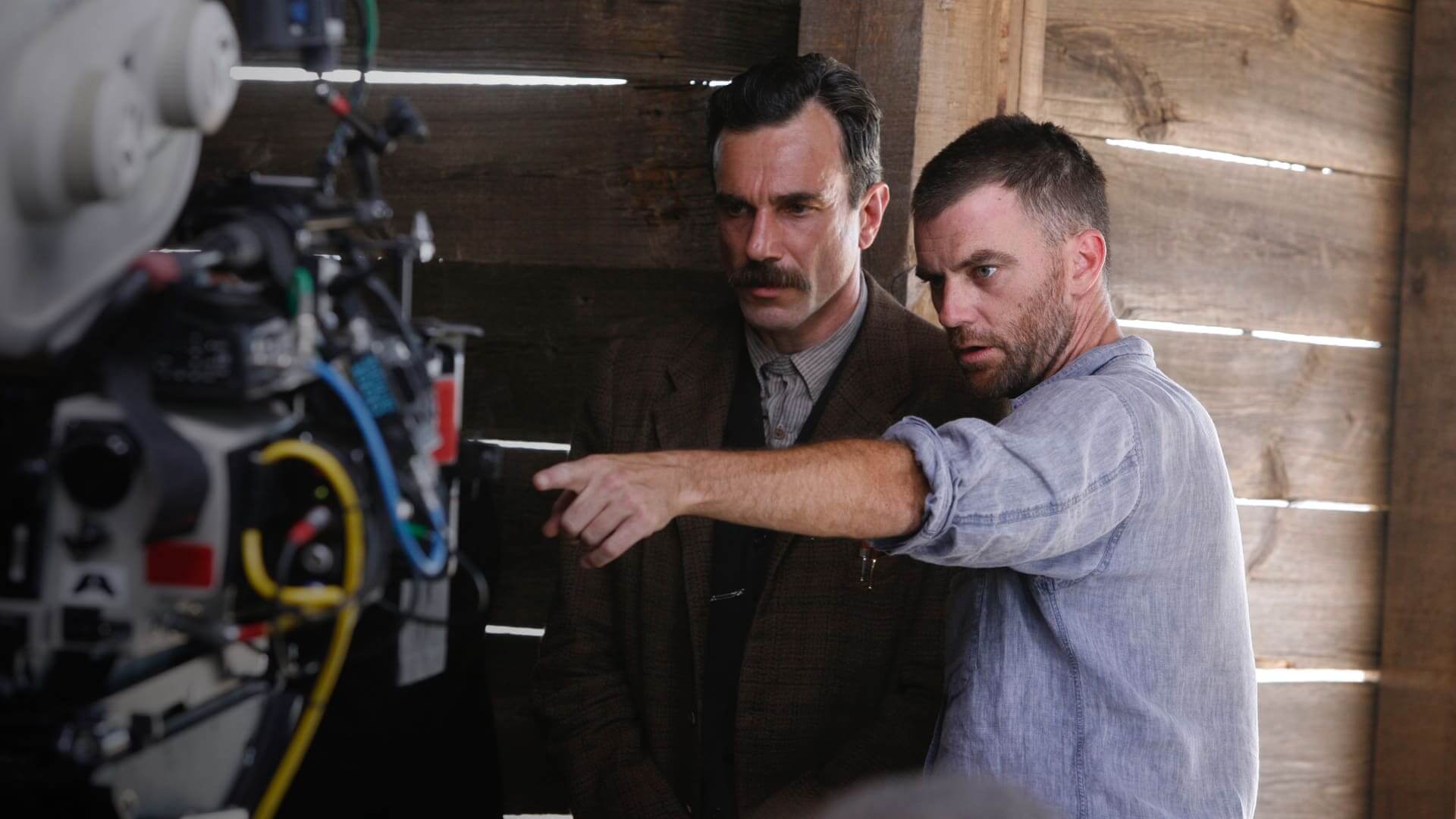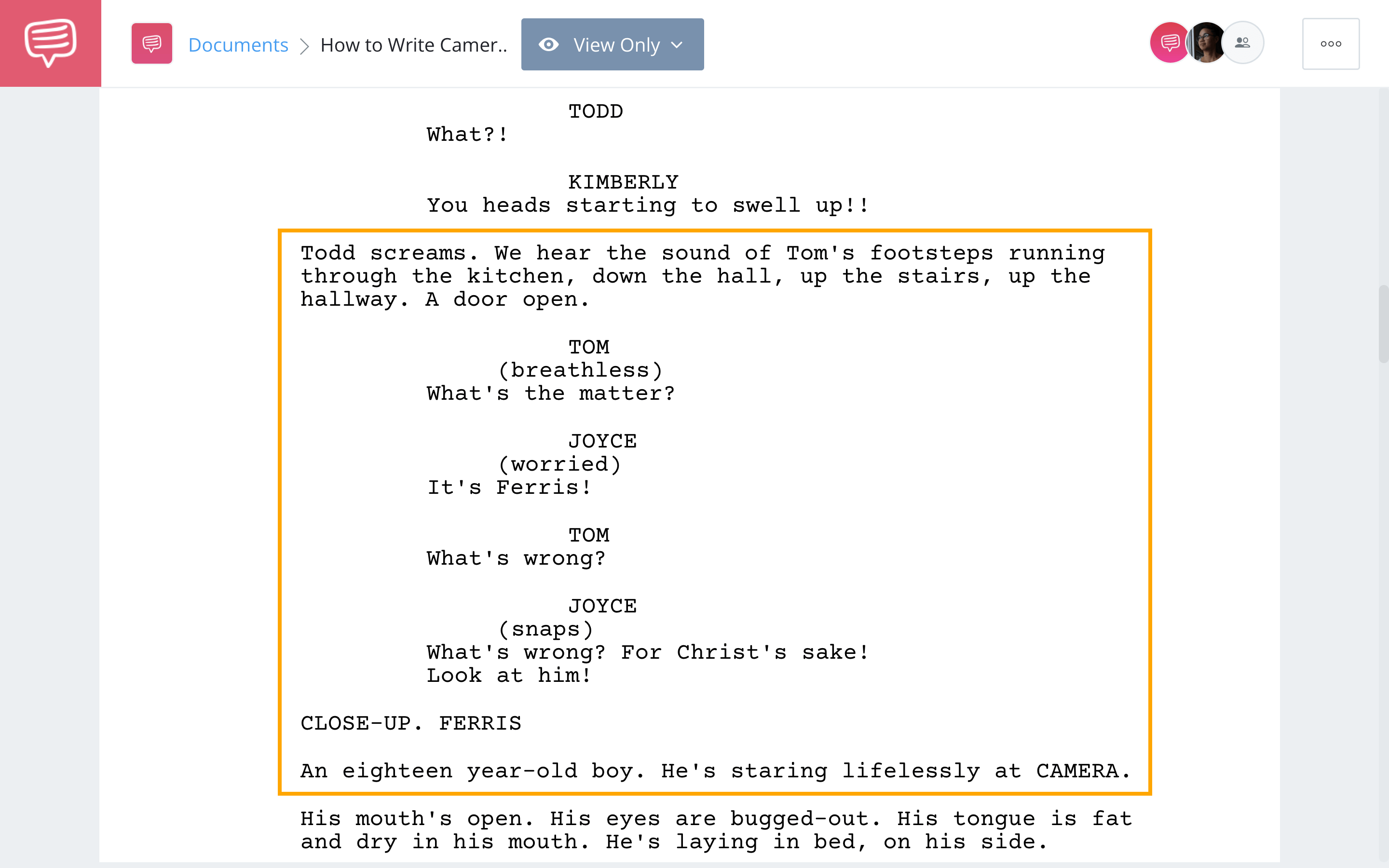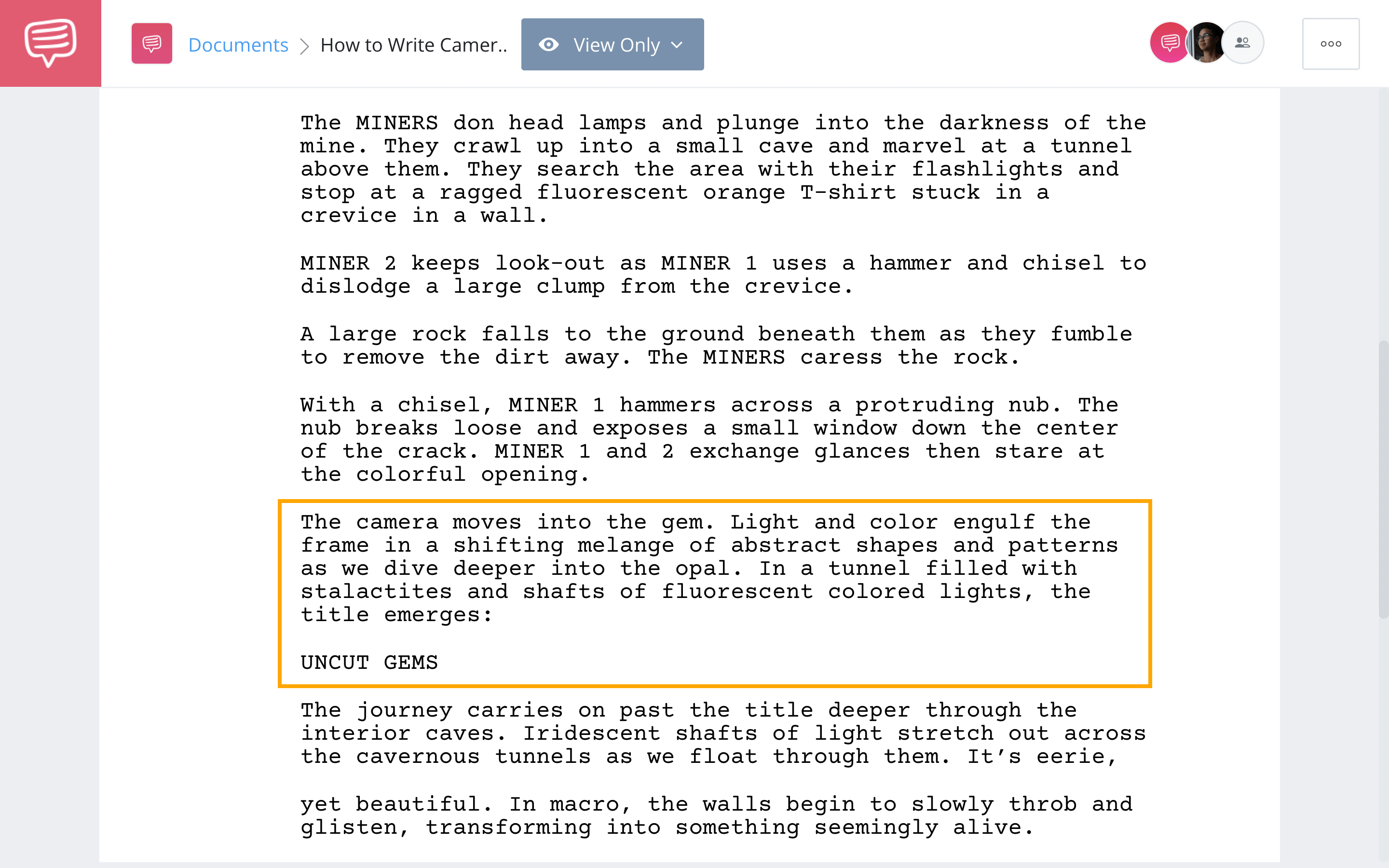The role of a screenwriter is to tell a story and create a cinematic experience on paper. It is a common debate as to whether or not screenwriters should write camera directions in a screenplay. Whether or not you plan to use them or plan to avoid them, it’s important to understand at least how to write camera directions in a script properly. In this article, we’ll take a look at how to write camera directions in a script as well as why to use them minimally.
Watch: Anatomy of a Screenplay — Ultimate Guide
How to Write Camera Directions in a Script
Writing camera directions in script
Sometimes you will be writing a scene with visuals in mind and want to write in camera movements, shot sizes, or different shot types into the script. There are a few different ways to write camera direction in script which are slug lines and action descriptions.
There are various ways to learn how to write camera directions in a script. And deciding which one to use for camera directions will depend on your writing style and how you want your screenplay to read.
Using slug lines
The first way to write camera directions within a screenplay is by using slug lines. Slug lines are their own line within a screenplay. Although they are typically used to describe a change in scene, location, or time, they can also be used to describe a camera direction.
We brought the Ferris Bueller’s Day Off screenplay into StudioBinder’s free screenwriting software to see how slug lines can be used to write camera directions. In this opening scene, notice how slug lines are used for close up shots of Ferris.
How to write camera directions in a script • Read Ferris Bueller’s Day Off Example
Within action descriptions
Another way to write camera directions in a screenplay is by writing them within action descriptions. Using slug lines allocates an entire line within your screenplay for a camera direction. On the other hand, writing them within action descriptions saves precious real estate in your script.
Using action descriptions is also better for writing more detailed or complex camera directions. The opening scene from the Uncut Gems screenplay uses action descriptions for camera direction.
Camera direction in script • Read Uncut Gems Example
Now that you know how to format camera directions in a screenplay, let’s take a look at why you should try to avoid doing it.
Related Posts
How to Write Camera Directions in a Script
Why to avoid writing camera directions
Including camera directions in a screenplay may sound like a good idea in theory, but it should actually be used sparingly. Here are a few reasons why most professional screenwriters avoid writing camera directions in a script.
Your script must be readable
Screenplays are meant to be readable. This is especially true for beginner screenwriters who need to hook readers from the first few pages. Inserting camera directions take away from a script’s readability. This can remove a reader from the script and disengage them from the story.
You are not the director
The reason many screenplays from auteur directors include camera directions is because they are planning on directing them. Writer directors like Paul Thomas Anderson, Quentin Tarantino, and Edgar Wright all use camera directions when they write because they plan to direct them.

PTA directing his screenplay There Will Be Blood
This is, however, not the case for nearly all other screenwriters. As the screenwriter, you are not the director. Camera directions are decided by the director. The only time screenwriters should include camera direction in script is if they plan to direct the screenplay or if the camera direction is essential to understanding the plot.
Describe the story not the shot
The role of the screenwriter is to create a cinematic experience on paper. This does not mean to include camera directions, but rather to describe the shot. Avoiding camera directions will help you be more descriptive of a scene and create better imagery for a reader.
Related Posts
UP NEXT
How to Format a Screenplay
Even if you do not plan to use camera directions in your screenplay, it is important to know how to format them. Learn about everything there is to know about formatting a screenplay in our next article so that you will be best equipped to write any story you imagine.


